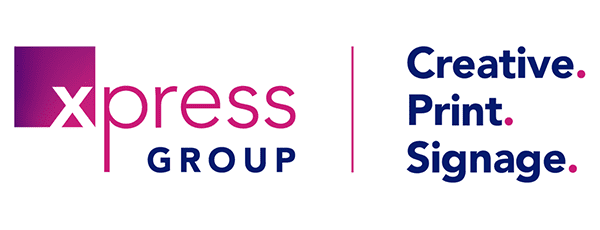
22 Nov How Green is Your Printer (Or Print Supplier)
Printing a Greener Future: Embracing Sustainability in the Print Sector.
Green printing may sound like a contradiction in terms.
Surely, by its very nature, it can’t be socially responsible and economically viable at the same time. Can it? It’s not a thing. Well, you may be surprised.
Not only is it possible, it’s more than possible – not just from an environmental standpoint but also in a business sense. There have been enormous improvements in equipment, materials, design, and logistics to make the print sector substantially more eco-friendly.
Also, through innovations in technology that produce more with fewer resources, thus delivering more streamlined efficiencies.
This article is about greener printing techniques or those that are very much moving that way. We’ll define what we mean by sustainability and highlight the critical planet-friendly practices that could make all the difference.
It’s the future for all of us.
It has to be. And here’s why:
An Inconvenient Truth?
Once under consideration and in dispute, climate change is no longer up for debate. It’s happening right now.
Our fluctuating climate could be causing landslides, soil diversity loss, and flooding. Not to mention extreme heat and cold, major storms and other newsworthy weather events. The polar ice caps are melting; not to put too fine a point on it, things really aren’t looking that great for Planet Earth right now.
Hence, the UK government’s drive for us to remove the same amount of carbon emissions from the air as we produce by 2050 – otherwise known as net zero. Did you know we were the first major economy to pass this requirement into law?
Is our planet running out of resources? Almost certainly, yet the population is still increasing. According to the United Nations, we will need the equivalent of three worlds if there are 9.8 billion people here by that milestone year – 2050.
A Greener Outlook
So, we all need to change our consumption habits and focus, enabling sustainability and balance in our lives and work. Especially – this applies to businesses, both large and small.
It’s not all doom and gloom.
The good news is that, although there is some way to go – and there are always improvements to be made – the print sector is stepping up to the mark and making a difference.
For example, Xpress Group aims to reduce its environmental impact and become carbon neutral. The business is certified to ISO1 4001, which means that wherever possible, we aim to deliver print solutions that are as green as our clients want and need.
A caveat: is it possible for a printing business to be one hundred per cent green in 2023? In today’s economically driven environment, the answer is no. It’s fair to say that industry-wide, all advances in technology have had and may continue to have an impact on the environment.
To be fair, energy use, carbon footprint and waste are sector-agnostic. There has been a price to pay, as we know.
But, all is not lost. There IS progress. As a whole, organisations have responded to heightened awareness of climate change in the last 30 years. Very much so, in fact.
For example, of note is that the UK has reduced its industrial emissions by 56% on 1990 levels.
So, let’s re-focus on printing.
What is Sustainability in Printing?
We may define sustainable printing as:
- Moving towards a reliance on renewable energy sources
- Reducing the use of energy and bringing down greenhouse emissions
- Making the most of recycled paper and other materials
Printers may review their production processes, for example, or limit their use of unnecessary chemicals. Perhaps they would favour digital printing and implement policies to reduce waste.
Another focus could be on creating and producing products that literally design out waste and pollution. Thus, this is printing that could keep resources and materials in use to regenerate natural systems.
Ultimately, it’s about accessing resources to meet a company’s commercial needs whilst preserving those resources for future generations.
Where could greener methods be applied?
Equipment
Landfill waste is an issue, not least with redundant technology. When printers are no longer usable, they could be recycled, in part or as a whole.
Inks
Normal or standard ink contains a petroleum-based pigment, so we’re after a Plan B. Eco-friendly inks are made from alternative raw materials, like vegetables, with soy ink being a popular choice.
Innovation can be astonishing: Researchers at Colorado State University have created ink from algae, which is in abundant supply and does not use fertilisers or herbicides.
Eco-Friendly Paper Practices
Just as racing drivers handle racing cars and tennis aces play with tennis rackets, it goes without saying that the printing sector uses paper.
Yes, everyone knows about the benefits of recycled paper. However, it’s only in recent years that it’s become more of an industry standard. This may seem surprising until we learn that recycled paper is much more accessible and affordable than previously.
Also, there is a move towards materials that are either 100% degradable or recyclable, with the materials used requiring no chemicals when they are processed.
And did you know that tree-free paper exists? It’s derived from vegetable products such as wheat, straw, bamboo, jute, or agricultural waste. One to watch, perhaps.
Carbon Balanced Printing
As it sounds, carbon-balanced printing involves balancing or offsetting the CO2 used in the paper, print production and delivery of printed goods through action that in effect, offers a “payback” to the environment.
For instance, this may include planting ecologically important forests under threat of clearance via organisations such as the World Land Trust (WLT). This organisation can measure a business’s carbon footprint so the parties involved understand their responsibilities.
Xpress Group is pleased always to use paper from certified sustainable sources, much of it carbon-balanced.
Logistical Practices and Workflow
In a wider, non-green-specific sense, but with a knock-on impact, improved efficiencies can lead to less waste and fewer carbon emissions.
Simple steps make significant moves forward: grouping shipments together to the same location in fewer boxes is an effective way for the sector to reduce its footprint.
Likewise, using electronic forms rather than printing them out.
As an organisation certified to ISO1 4001, we aim to manage, minimise and recycle our waste as much as we can. And, our staff are trained to advise our clients on potential greener solutions.
Also, have a look at our On-Demand Printing article. Instead of bulk printing and storage, valuable paper, energy and time can be saved. This process could reduce obsolescence and piles of unused marketing materials that end up at the dump.
Why Does All Of This Matter? What Are the Benefits of Greener Printing?
Apart from the obvious, that is? Well, consider the following:
- A focus on sustainability could enable companies to make the most of technological advances and printing techniques yet to come. The demand for print can fluctuate, therefore this is a sound future-proofing approach, as it were.
- The modern consumer prefers more eco-friendly brands and thinks about sustainability when purchasing. Okay, not all of them, but according to a recent study by McKinsey and Co, 60% of respondents had a greener agenda on their minds.
- With careful implementation, sustainable printing can streamline processes and improve productivity. As mentioned earlier, quicker, faster and more efficient equals more efficient. And leaner equals greener.
Making Changes, Meeting Challenges
Everyone needs to do their part in conserving the Earth for future generations; the print sector is no exception. There really IS no planet B, therefore, printing businesses face strong incentives to change.
Businesses have, in general, shown resilience in recent years through adapting to market developments and adopting sustainability practices.
In our view, greener printing will grow.
There have been shifts in attitudes and in the market, which we hope will lead to environmental and economic progress to create a promising future for all – one where we survive, and thrive.
